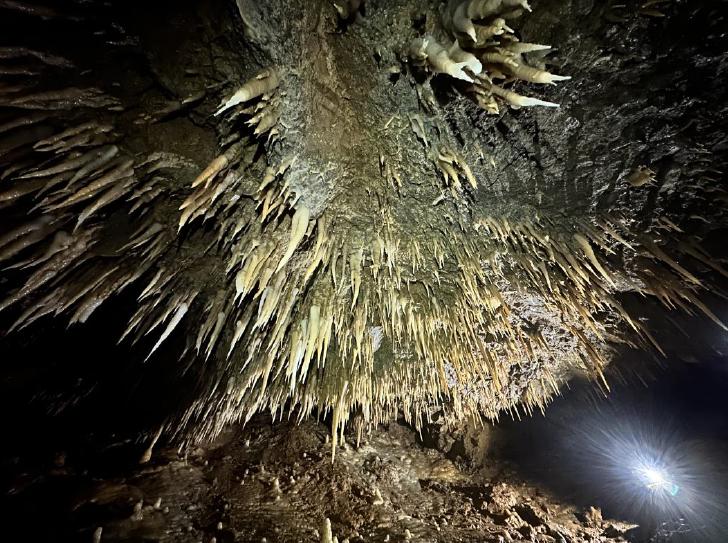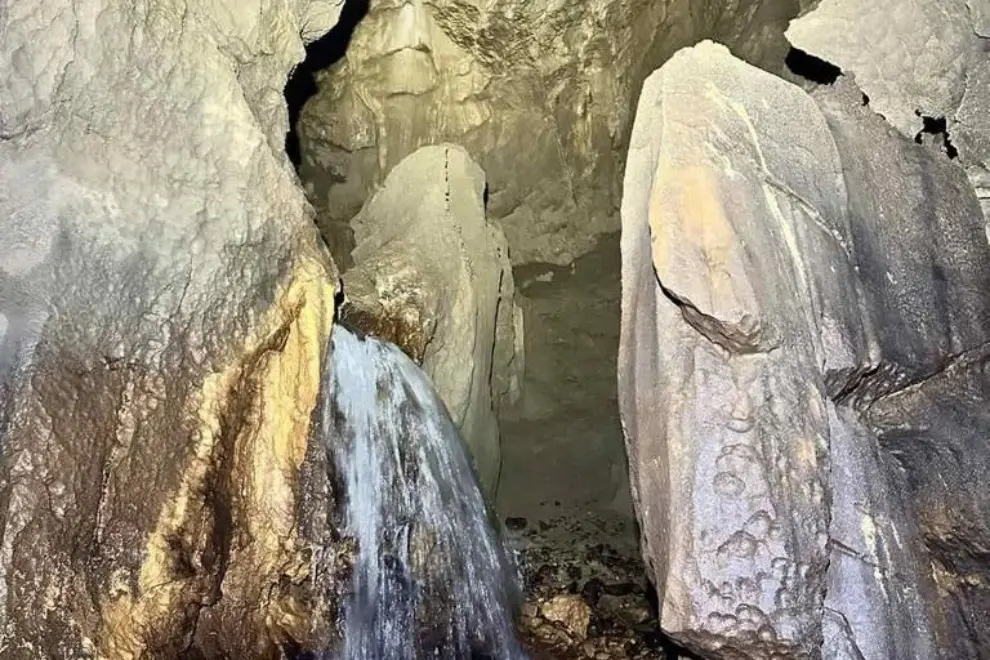Over 70 caves discovered on emerging Koper-Divača rail track
A total of 72 karst caves have so far been discovered during the construction of a 27-kilometre rail track that will link the port town of Koper and the Divača railway junction by a new, faster route.
The caves have been explored and documented by experts from the national Karst Research Institute.
About 100 small and 10 large karst formations are expected to be discovered by the end of the project. The new railway is slated to open to traffic in 2026.

Limestone formations in one of the karst caves discovered during the construction of the Koper-Divača rail track. Photo: ZRC SAZU Karst Research Institute/2TDK
The excavation of tunnels on the new track - these run 20.5 km in length, excluding service tunnels - started in 2021, but most karst formations have been discovered recently, according to 2TDK, the state-owned company which manages the rail project.
When a cave is discovered, it is explored, measured and documented by experts from the Karst Research Institute. These propose measures that need to be endorsed by the Nova Gorica branch of the Institute for Nature Conservation.
After a cave is documented, it is separated from the tunnel with a wall.
Recently, a number of karst formations were discovered as the track crossed the Beško-Ocizeljski cave system. "Some caves that were recently discovered contain a lot of water. The rule is not to change water flows," 2TDK said.

Some of the newly discovered caves contain streams. Photo: ZRC SAZU Karst Research Institute/2TDK
Before work on the new track started, experts said they expected 100 small and 10 large karst formations to be discovered during the project. "Their predictions have proved to be pretty accurate so far," 2TDK said.
The location of karst formations can be determined before construction work starts through geophysical research. The shape of the formations, their location in respect to the tunnel, potential water content and other features can all be determined beforehand.


